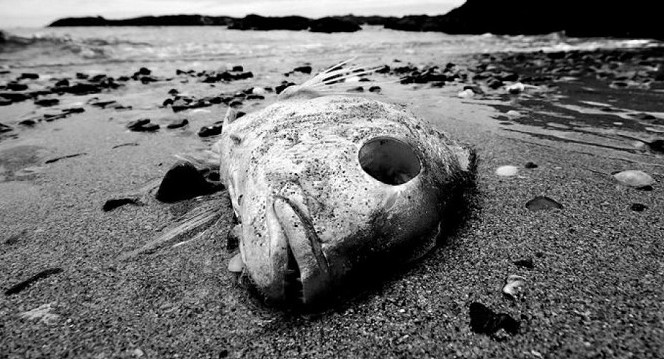The number of 'dead zones' in the sea is increasing
According to a recent report, the number of dead zones in the ocean is increasing due to sudden ocean warming.
Does algae make many dead zones on the sea?
On the ocean there are vast areas called dead. These are areas with such low concentrations of oxygen that it is difficult to survive in these areas.
According to a recent study by the US National Science Foundation, the phenomenon of "sudden warming of the ocean " is one of the leading causes of formation on dead zones in the sea.
Scientists noted the warming phenomenon that occurred about 14,700 - 11,500 years ago in the North Pacific Sea. This phenomenon raises concerns about the strong expansion of the dead zones in the future.

When the ocean warms up, more dead zones will appear.
According to the journal Nature, the periods when the ocean warmed up dramatically prompted the emergence of dead zones at the end of the ice age.
Dead zones are often referred to as the " most oxygen deprived regions". Many researchers argue strongly about the cause of the expansion of dead zones. However, they found a clear link between the two sudden warming periods of the ocean and the formation of dead zones.
"Our results show a link between ocean warming and dead zones in deep places," said the program director at the Oceanic Science Department under the National Science Foundation. "These findings reveal that the expansion of dead zones is growing rapidly."
But warming water is not only the main cause of widening the dead zone, although they can reduce the concentration of oxygen in the water.The main cause lies mostly in diatoms. The emergence and spread of this algae has led to a serious decline in oxygen levels.

The main cause of widening the dead zone is mostly in diatoms.
The leader of the study, Summer Praetorius said: "The study found a strong link between warming ocean phenomenon, hypoxia and the production of diatoms."
Sand algae or silica algae is a major algae group, and is one of the most common phytoplankton types . Most diatoms are unicellular organisms. But they can exist in clusters in the form of thin strands, fans, zigzags, or stars. Algae are large shells, thriving in warm water. But this plant also requires new sources of nutrients and iron to grow.
The North Pacific waters are famous for their high nutrient content such as nitrate and phosphate but severe iron deficiency. Because of that, the diatoms wear strong but die very quickly, sink to the sea floor and reduce the amount of oxygen in the water, turning that water into a dead zone with other organisms.
Through research, the main problem for scientists is why these changes can happen so quickly? The impact of climate change is assumed to be slow and predictable. But this study suggests that these assumptions may be wrong at any time.

The dead zone is likened to a demon in the sea.
As research co-author Alan Mix said: "Research shows that the consequences of climate change affecting marine ecology can be extremely large and happen very quickly, difficult to alert in time. ".
The dead zone is likened to a demon in the sea. The world has about 400 dead zones, including about 1% of the continental shelf area. However, the estimated number could be up to 1,000 dead zones. One thing worth noting is that humans consume a lot of seafood species. If the number of dead zones is increasing, there is a risk of shortage of food sources for humanity for many years to come.
The most important thing is that 94% of the dead zones are now determined to be the most impacted areas if the Earth's temperature increases by 2 degrees Celsius by the end of this century.
- Dead zone in the Gulf of Mexico may reach nearly 21,000 km2
- Giant dead zone can appear on the ocean in 2030
- Discovering the 'dead zone' in the Atlantic Ocean
- Russia and Mongolia will establish transnational conservation zones
- Why does France have 12 different time zones?
- The relationship 'brain damage' between the number of talent and Death
- Unexpected facts about the Dead Sea
- Dead and alive again - The phenomenon of wonder and explanation
- The earth warms up to make the alligators suffer.
- Damaged or real: The number of people alive is more than the number of dead
- Number 13 and superstition fear
- US Army develops self-destructible ammunition for safety
 Surprised: Fish that live in the dark ocean still see colors
Surprised: Fish that live in the dark ocean still see colors Japan suddenly caught the creature that caused the earthquake in the legend
Japan suddenly caught the creature that caused the earthquake in the legend A series of gray whale carcasses washed ashore on California's coast
A series of gray whale carcasses washed ashore on California's coast Compare the size of shark species in the world
Compare the size of shark species in the world